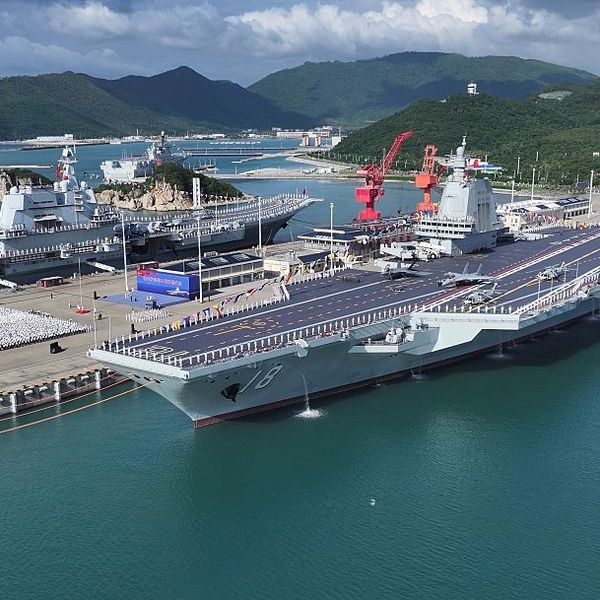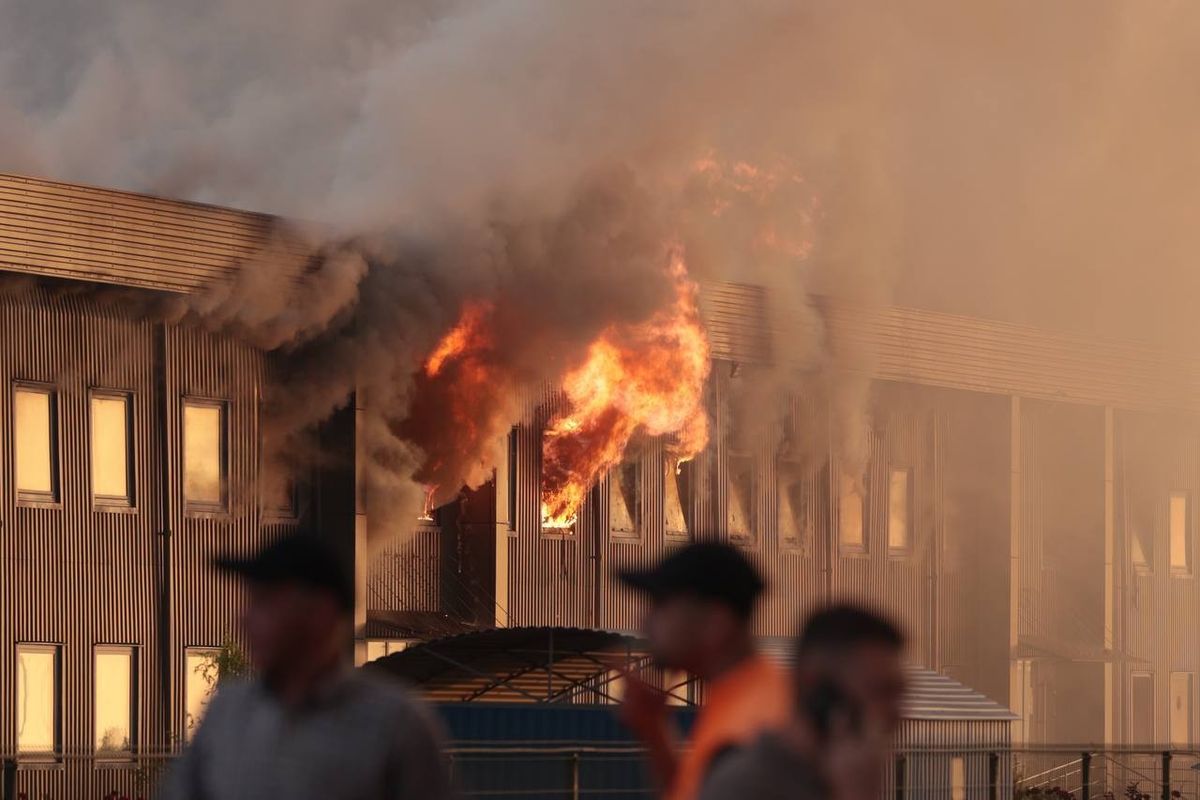OPINION — Last week, senior Pentagon officials offered some initial lessons learned from the first two months after the Russian invasion of Ukraine.
At an April 27, Senate Armed Services Subcommittee hearing, Lt. Gen. Jonathan Braga, Commanding General, Army Special Operations Command (USASOC), pointed out, “When Russia annexed Crimea in 2014, we were not forward postured in Ukraine. In response to this unprovoked aggression, we invested time and talent campaigning in support of Ukrainian territorial defense.”
Starting eight years ago, Braga said, “We built enduring relationships, provided logistical support, and began training with the intent to increase societal resilience to bolster their resistance posture.” That forward presence of Army Special Forces “provided a foundational understanding of the operating environment [in Ukraine] and played a role in humanitarian assistance, and information operations, while providing on-the-ground daily assessments for senior leaders,” Braga added.
The Ukrainian Special Operations Command was established in December 2015, and agreed to cooperate with NATO Special Operations Headquarters, according to Janes, the military-intelligence publication. Both U.S. and British special forces have helped train the Ukrainians who developed four special operations regiments; three navy special operations regiments; and two training centers.
“In recent years, Ukrainian SOF have participated in an extensive number of joint training packages with NATO and non-NATO partners,” Janes reported.
The last U.S. Army training team taking part in the Joint Multinational Training Group Ukraine consisted of 165 members of the Florida National Guard that arrived in Ukraine in November 2021, just as Russian forces were beginning to amass near the border. The team was removed from the country in early February, as concern about the invasion mounted.
Last Friday, Pentagon spokesman John Kirby announced “the recent reunion now of these Florida National Guard members with their Ukrainian colleagues.” He said the reunion took place at a U.S. military installation in Germany where the Ukrainians will be trained by the Florida Guard team on the artillery, radar and armored vehicles that were part of the latest U.S. military assistance packages.
Braga talked of other types of assistance. “As armed conflict broke out [in Ukraine],” he said, “our regionally-aligned forces [in Europe] led a Coalition Planning Cell of seventeen nations to coordinate information [warfare] with international SOF (special operation forces) partners and Allies.”
One result, said Braga, was that “Ukraine is imposing great cost on Russia in the information space,” adding that U.S. SOF, along with NATO and European partners, are aiding the Ukrainians in information operations.
Summing up, Braga said, “The strategic value of our existing partnerships – built over the past eight years particularly with our Ukrainian partners – quickly became apparent” after the February 24, Russian invasion.
He went on to say, “We are applying these same lessons to our nation’s most consequential strategic pacing challenge, the People’s Republic of China (PRC)…PRC influence is increasing in scope, scale, and velocity without regard for international norms or boundaries. Just as we demonstrated in Ukraine, irregular warfare investments are required now in preparation for the PRC’s stated intentions to challenge the global order. These irregular warfare tenets are being applied as we expand our focus to PRC activities in alignment with the NDS,” referring to the 2022 National Defense Strategy, which has yet to be released publicly.
At an April 27, House Armed Services Committee meeting on the Air Force fiscal 2023 budget, Air Force Secretary Frank Kendall was asked what lessons had been learned so far from the Ukraine war.
“Generally speaking,” Kendall said, “the type of threat we are seeing there is not a surprise to us…We are watching Ukraine right now; it’s a bit early to tell based on judgment of performance.”
He did suggest, “From the performance of operations…the failure of Russia to achieve air superiority early and control the air decisively was a major impediment to their attempt in the invasion.”
The Cipher Brief hosts expert-level briefings on national security issues for Subscriber+Members that help provide context around today’s national security issues and what they mean for business. Upgrade your status to Subscriber+ today.
The other thing Kendall pointed out was “the effectiveness of air defenses, particularly like Stinger [a man-portable air-defense system] and the SA-10 [a Russian long-range, surface-to-air missile system]…Part of that is the tactics the Ukrainians used – they used what they had very well and they were able to keep those systems alive despite the threat.”
Both Kendall and Air Force Chief of Staff Gen. Charles Q. Brown during the hearing then had to defend against committee members who questioned plans in the Biden fiscal 2023 budget to retire so-called legacy aircraft like the A-10 fighter-bomber and the E-3 Sentry airborne warning and control system (AWACS). Kendall and Brown repeatedly pointed out the two aircrafts’ vulnerability to anti-air weapons such as those successfully used by the Ukrainians.
As Brown put it, these legacy aircraft could operate in places like Iraq and Afghanistan where the enemy had no meaningful air defenses. With China and Russia, as shown in Ukraine, the threat to aircraft would exist. “I don’t expect we’ll be in very many permissive environments in the future,” Brown said at one point.
At the same hearing, General John W. Raymond, U.S. Space Force Chief of Operations, explained the useful role space had played so far in the Ukraine war.
“I think you’ve seen very clearly in the Russia Ukraine conflict where space, including commercial space, has provided a great advantage to Ukraine,” Raymond said. He added, “Commercial space has allowed us to show information much more broadly. It has allowed us to see the AOR (area of responsibility) with much greater clarity…especially leading up to the conflict.”
Last Thursday, Chief of Naval Operations Admiral Michael Gilday, interviewed at the Center for Strategic and International Studies (CSIS) on the future of the U.S. Navy, was asked what lessons were learned from the sinking of the Russian cruiser Moskva?
Gilday pointed out, “We don’t think that they [the Russians] tried to defend themselves ahead of time,” and one lesson was “that you have to understand the environment you’re operating in. You have to understand the threat. And you have to understand yourself and your own capabilities, and how you would use them, and train to them.”
In answering a question about his soon-to-be-released 2022 Navigation Plan, Gilday indicated the plan covered some areas he had identified that were associated with the Moskva sinking.
Gilday answered “Counter C5ISR&T,” which stands for command, control, computers, communications, cyber-defense (C5), intelligence, surveillance, and reconnaissance (ISR). “So,” Gilday continued, “This is our effort to blind the opposition so that we can maneuver effectively and maneuver inside the enemy’s WEZ [weapons engagement zone] for a certain amount of time.”
He added, “And so that work is all classified. Actually, the north start objective is classified for that work, but essentially, it’s to give – it’s to be able to maneuver the fleet.”
Terminal defense is another initiative in the plan, Gilday said. “So think laser-directed energy, microwave energy. Think about layered defense for survivability of the fleet; so long-range fighters [aircraft].”
He also mentioned another area that has shown to be a Russian problem in Ukraine. “Sustain the fleet,” Gilday listed as being in his plan. “So there’s an element of contested logistics that also is a big effort for us right now, and actually leveraging unmanned, potentially in that area,” he said.
“I think more broadly,” Gilday said, “there are things that we’re learning about what’s gone well in Ukraine and what hasn’t, and what potential lessons we could draw with China, Taiwan, that we need to – that we need to examine very, very closely.”
Lesson learned has always been the military’s way of making adjustments. The Ukraine war already has provided another means for doing just that.
Read A Picture of Putin’s Nuclear Option from Senior National Security Columnist Walter Pincus only in The Cipher Brief











